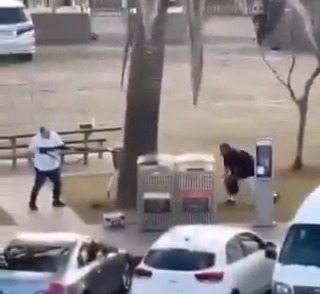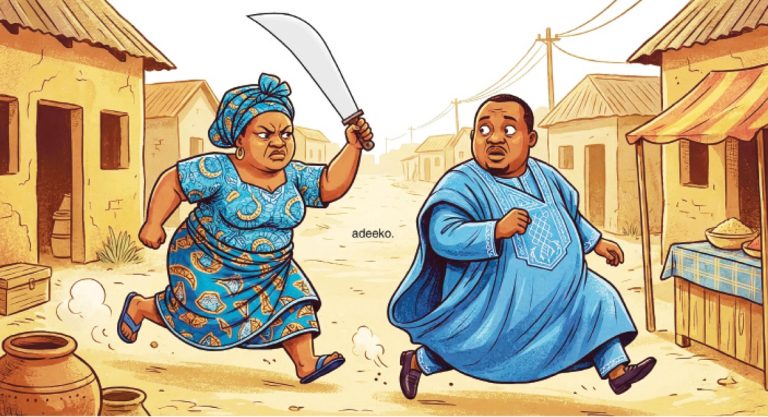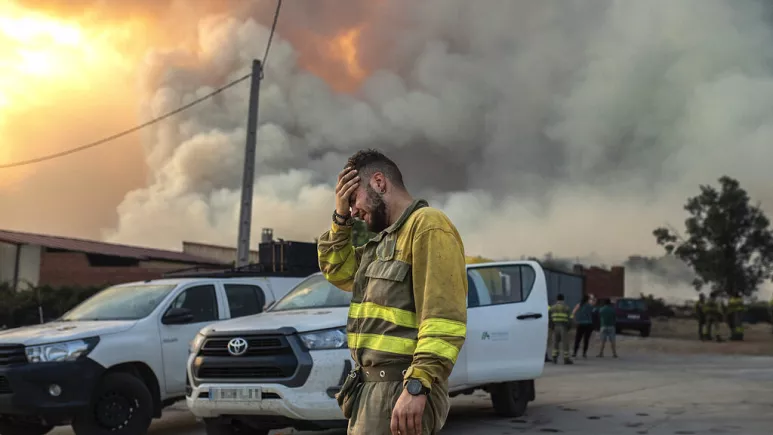
Disaster struck again just ten years after a huge fire devastated the municipality of Bejís, in eastern Spain.
Last summer, the southern European country was experiencing a string of heat waves and the forest was very dry, something that worried the local residents.
On 15 August a fire broke out in one of the other villages near Bejís, which itself is home to some 373 people.
“The air was very hot so at night it became uncontrollable. It was as if they had put more fire to the fire,” María José Madrid, the mayor of Bejís, told Euronews.
Neighbours paid close attention to the fire as it advanced, and saw a ribbon of flames dancing directly towards them.
“It was coming at an incredible speed towards the village, so we immediately ordered the evacuation. That was the hardest moment: seeing everyone leave and not knowing if there would be anything left when we returned. We felt helpless,” she adds.
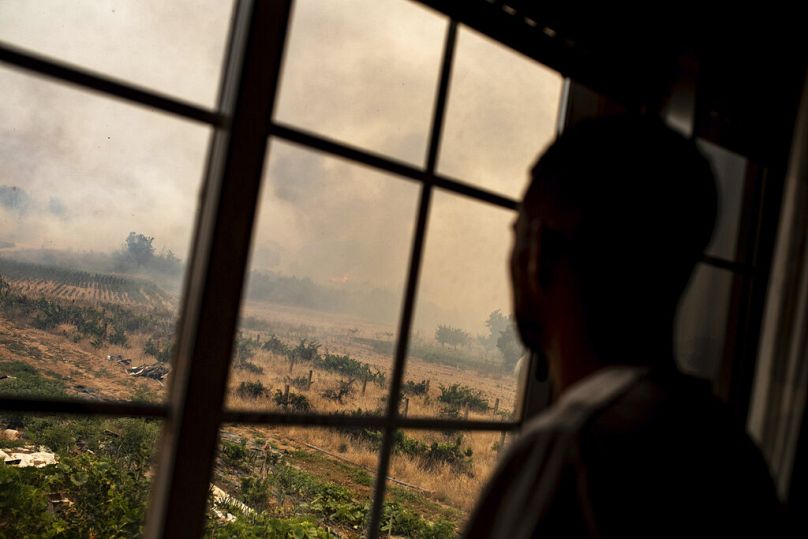
In total, 15,000 people – both from Bejís and the surrounding villages – were evacuated, and the fire took a month to extinguish.
An area the size of around 16,500 football pitches was burned to cinders.
Almost a year later, the road leading to the village still shows a desolate landscape. Kilometres of mountain reduced to ashes and rows of black skeletons that were once pine trees.
Financial support to mitigate the damage, compensate people for their losses and rebuild what has been burnt is only arriving now, one year later.
The Valencian regional government has provided €1.2 million, but the town council has not been able to apply for any kind of support from the central government as they would have to pay back part of what they receive and this is something the small village can’t afford.
In the mayor’s own words, help has been much needed, but it “will never be enough”.
For local residents, financial support has come too late as the town hall was overwhelmed. “We couldn’t cope with all the demands, we are a small town, we only have two administrative workers”.
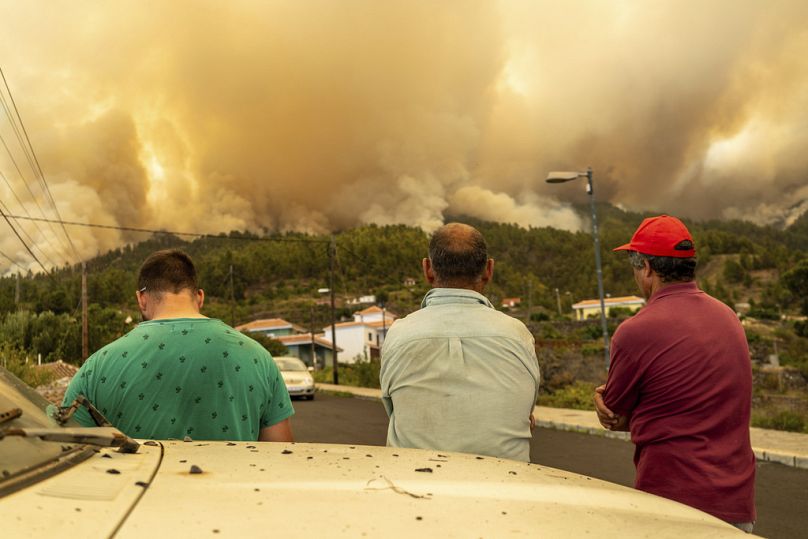
What lessons have been learned one year later?
The fire, caused by lightning, was “impossible to prevent”, but the ferocity could have been avoided.
“The mountain was very dirty. Years ago the pine trees were planted very close to each other, this made it impossible to clean the area,” says the mayor.
After the fire, the level of awareness was high. Given the lack of resources, Ángel Gil, along with other villagers from Bejís, started an association called Oriwa, which is cleaning up the mountains.
“At the moment of truth, we are on our own. Administration is very slow and the money doesn’t arrive,” the villager from Bejís told Euronews
“If our association didn’t exist, no one would clean the land. The regional government focused on urgent things, such as cutting, felling and restoring the areas used by people,” he adds.
Local people, like Ángel, are trying to do what institutions can’t so that they won’t see again their land consumed by flames.
The idea of megafires scares them: “Fires are getting stronger and stronger, more and more powerful”.
Sources from the regional government of Valencia consulted by Euronews confirmed the trend. “We are faced with a phenomenon which, because of its frequency and intensity, has become one of the biggest environmental problems facing our mountains”.
The reasons behind it are heat waves, drought and the exodus from rural areas, as regional authorities point out.
But the big question is: what has been done to protect the forests after the fires. Neither the regional government nor the local authorities have yet answered this question.
It remains a “great challenge” for them.
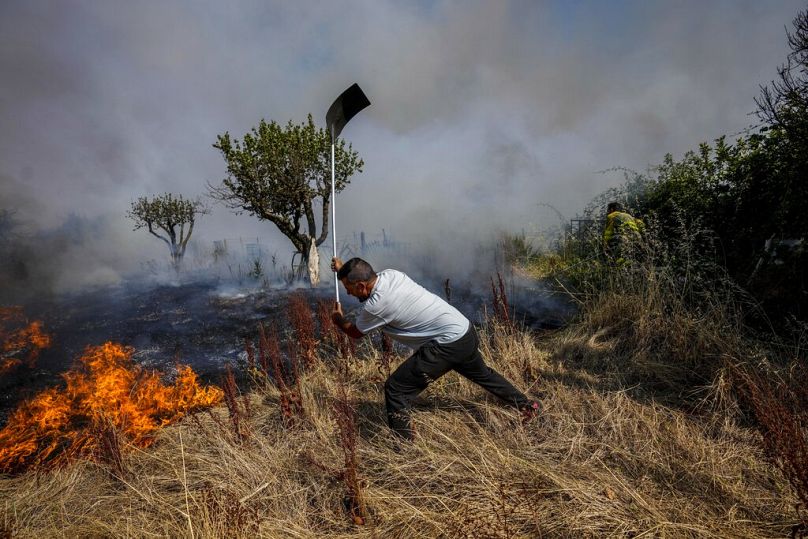
France: the aftermath of the most devastating fires
“135 hectares of the land I own burned.”
Nathalie Morlot was affected by the biggest wildfires seen in France in the last 30 years, when her municipality was hit by flames.
Just like Spain, France’s forcests faced a catastrophic summer in 2022.
More than 27,000 hectares burned throughout the summer in the south west, and a total of 36,750 residents were evacuated, while the region and its inhabitants are still crippled by fear of it happening again.
“Some of the pines in those areas were planted 60 years ago by my grandparents — now, there is nothing left of them”, Nathalie tells Euronews.
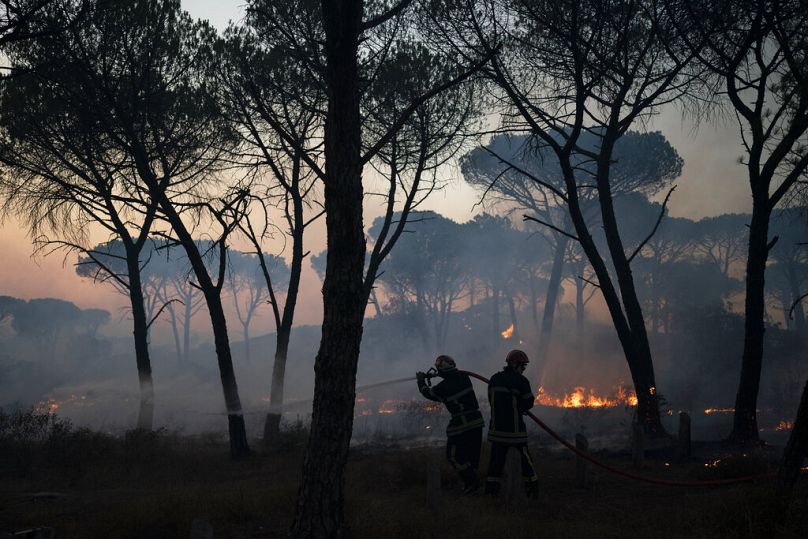
After the fires burned some of her family estate, Nathalie found herself demoralised, with an estimated loss of around €800,000.
Although her insurance compensated for €135,000 of the losses, she says that the worst part is knowing that lands that will be reforested now will only potentially benefit her grandchildren.
A budget of €7.6 million is earmarked for upgrading tracks and ditch networks, and installing surveillance cameras: but reforesting desolate landscapes will take time.
“It takes two generations for a forest to regenerate. And that is, if no more fires erupt in the next 10 years” says Philippe Barbédienne, advisor for SEPANSO, an association in charge of protection and development of nature in the region.
According to him, too much time elapses between the discussions of the government and the moment when the measures trickle down to the grassroots – leading to more chances for wildfire to occur again.
‘We are fed up’
“A year later, we’re fed up. We have been pretty much on our own in managing the crisis and its aftermath” says Anna, a local resident of la Teste-de-Buch.
Locals are unhappy with the treatment national and regional politics gave their region, Nouvelle-Aquitaine, following the devastating wildfires. President Macron pledged last year to reforest but to comply with safety recommendations, this will not start until the end of 2024.
For Nathalie, the most pressing issue to be worked upon for authorities should be prevention.
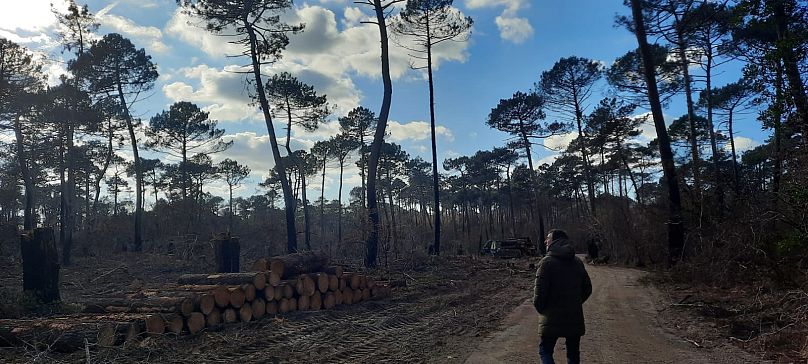
“As locals, we do care about our region a lot. But we see that this is not necessarily true for tourists”, says Anna.
“We had rules implemented following the wildfires, which every local abided by. But as soon as tourists started to flock in the region, all security measures seemed to have vanished”, she adds.
Local residents, she says, were a secondary consideration, as tourists are a big financial windfall for the region.
“As soon as tourists arrived, authorities closed their eyes on safety rules”.



